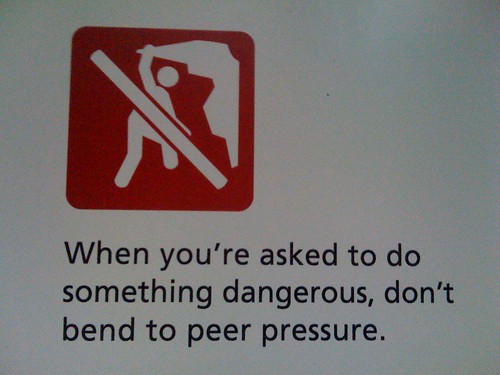"There is an immeasurable distance between late and too late."
Og Mandino
So I know my posts don’t flow from the tips of my fingers as
my other Mudda Bruddas, but I’d like to think, as you can imagine, that what I
lack in volume I make up for in quality. Like I said – at least I’d like to
think that. Brian and I did our regularly scheduled Wednesday run – a good
solid under 10 minute per mile pace for our 7 miles – and I was talking about
all the great posts that never were. And then came the idea – why not do a post
regarding all the good ideas for posts that I have had over the past 6 months
or so but never got off my butt too put down on paper. That is a pretty funny
idea. Not sure Brian or Pat would agree with my unrecorded genius but some of
that was pretty good. So good that I can’t even really remember what today’s
good idea was. Now that is good.
But it did get me thinking and reflecting on an earlier post
that I had written – the one where I posed the question of what Mudder are you
training for in life. If you are
anything like me, there was very little that was going to get me off the couch
to set a new goal. I was fairly happy with my sedate life style. I was fat,
ignorant, and happy. Nothing like a challenge to get you up off the couch but a
challenge from people you respect – you both can guess who I am referring too
here (Enter Name Here: _____________________)
I learned something important in Miami that I have been
reflecting on since Miami. It is a small thing but I think important especially
in regards to leadership. Be Freakin’ On Time!!! There is nothing that can
completely get your day off to a wrong start, lose a little credibility in the
eyes of those who look up to you as a leader, or simply cause more problems
than not being on time.
Now I know that with different cultures we have all types of
different definitions of time. My wife and I spent a year in The Gambia, West
Africa and there time has a whole new meaning. We used to get quite upset when
others were not as punctual as we were too meetings. If there is anything that
we Americans can do is schedule a dang-on (I used the word dang-on) meeting. We
took it personally when others were late. No sense of urgency! Lack of commitment!
Blah, blah, blah…The thing we didn’t know is that we were using the wrong
clocks. In West Africa there is a whole different sense of time. In The Gambia
they do this thing that we have lost a little – yeah they stop and talk to one
another. We quickly learned that it was no sense of disrespect that individuals
were late. They simply met family and/or friends along the way and stopped to
great them. In the general culture of The Gambia to not stop and greet someone
is far, far worse for relationships than being late for a meeting. So it didn’t
turn out that we were on time. We were simply rude in getting to the meeting.
Now that is a learning curve for you.
Let me tell you what you don’t want to do. After our
Saturday run in Miami, we felt great. General sourness; a few pains here and
there; but all in all everything was good. Knee was good. Shoulder was good.
Pat had no gaping wounds. Brian’s body wasn’t eating itself (but then again
maybe it was he is looking a bit wraithish lately). We had the grand plans of
taking our time to get to the course on Sunday for our Sunday run. Go at our
own pace. Have a good time.
 Through the start gate – which by the way was horribly
planned in Miami. For those of you who run these Mudders you may have seen a
course where you have to climb a miniature Berlin wall to get in to the
starting area. What they did here was start you out about 30 yards from the
wall, make you turn a corner and then climb the mini-me of Berlin walls. That
would have been find of course but there were others, those who had never run a
race, who mistakenly thought the race had begun. Luckily Brian walked ahead and
Pat and I followed but it was like a bad stampede at a concert. People were
just getting pressed into the wall as others came behind in their mad dash to the
start.
Through the start gate – which by the way was horribly
planned in Miami. For those of you who run these Mudders you may have seen a
course where you have to climb a miniature Berlin wall to get in to the
starting area. What they did here was start you out about 30 yards from the
wall, make you turn a corner and then climb the mini-me of Berlin walls. That
would have been find of course but there were others, those who had never run a
race, who mistakenly thought the race had begun. Luckily Brian walked ahead and
Pat and I followed but it was like a bad stampede at a concert. People were
just getting pressed into the wall as others came behind in their mad dash to the
start.
There was no such greeting for us at the start way. Other than
some odd stares and a little Rage Against the Machine blaring, there was no
motivational talk. No Tough Mudder pledge. It was simply the three of use
running through the start trying to bin on our bib numbers. Which made it a
little difficult as we didn’t have enough pins in our packet to do that. Thank
goodness there are so many abandoned bibs along the way.
The nice thing for us is that we caught a good bit of the
field that day so we didn’t finish last. Started last but that was simply due
to poor planning on our part.

















